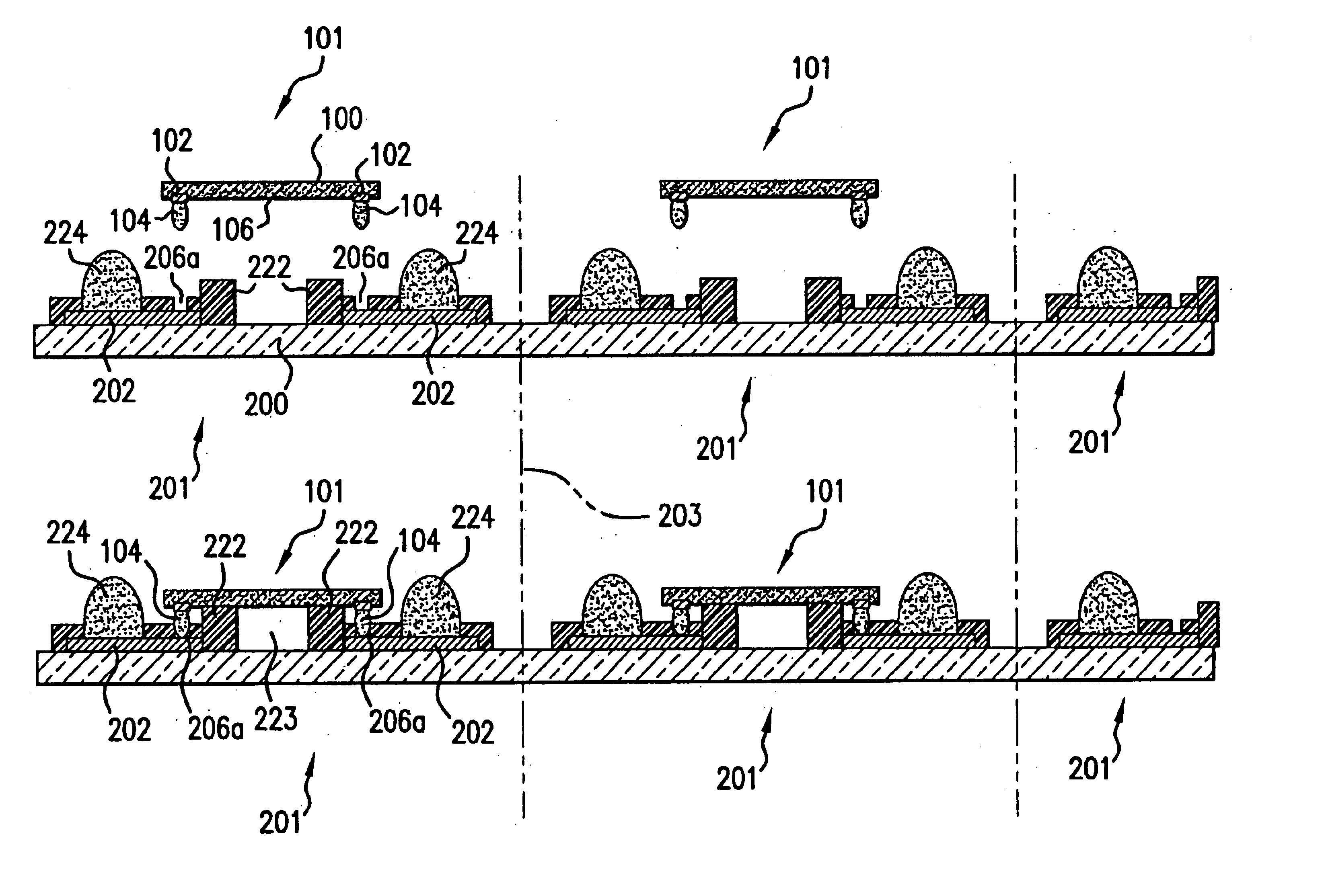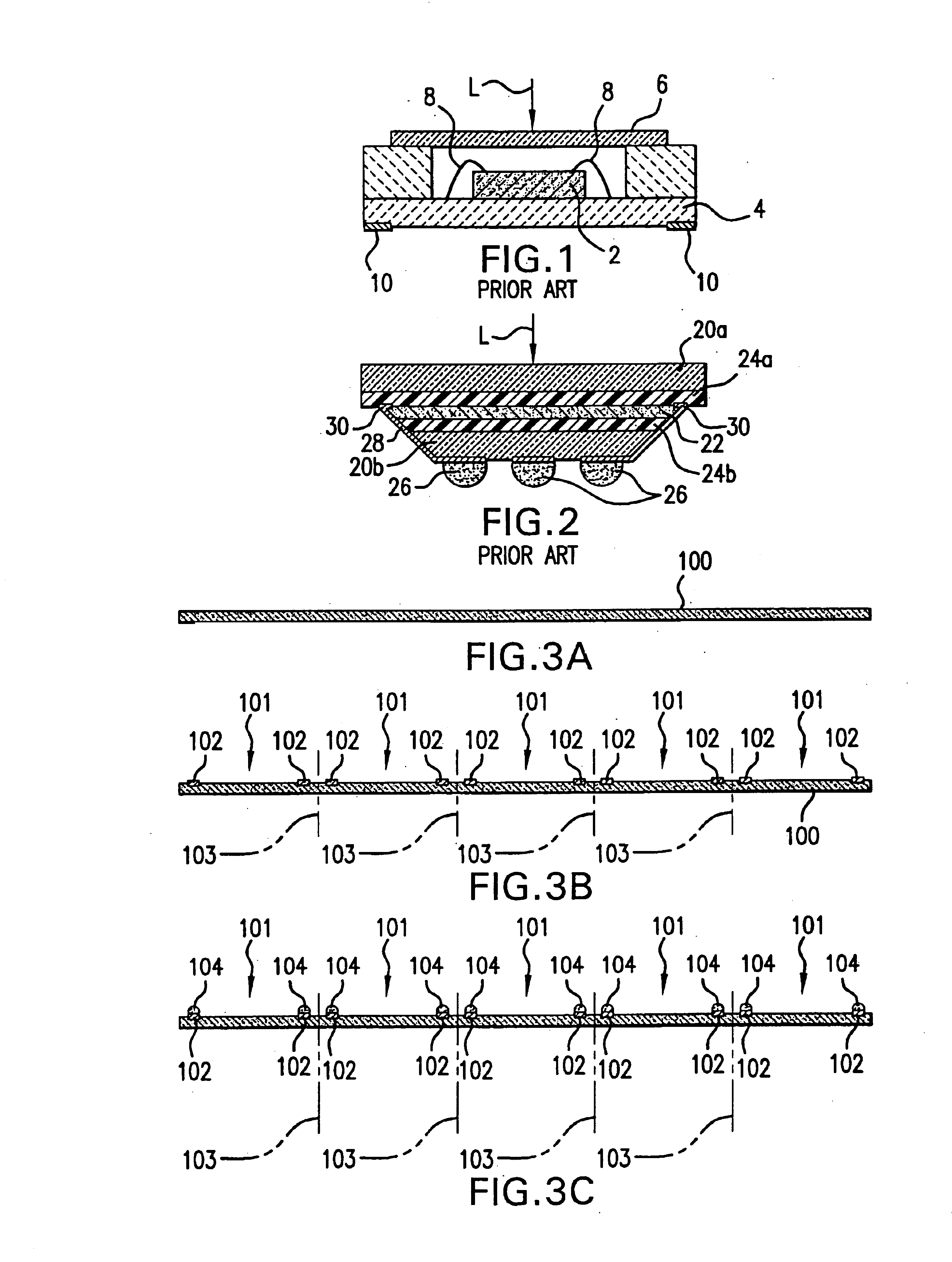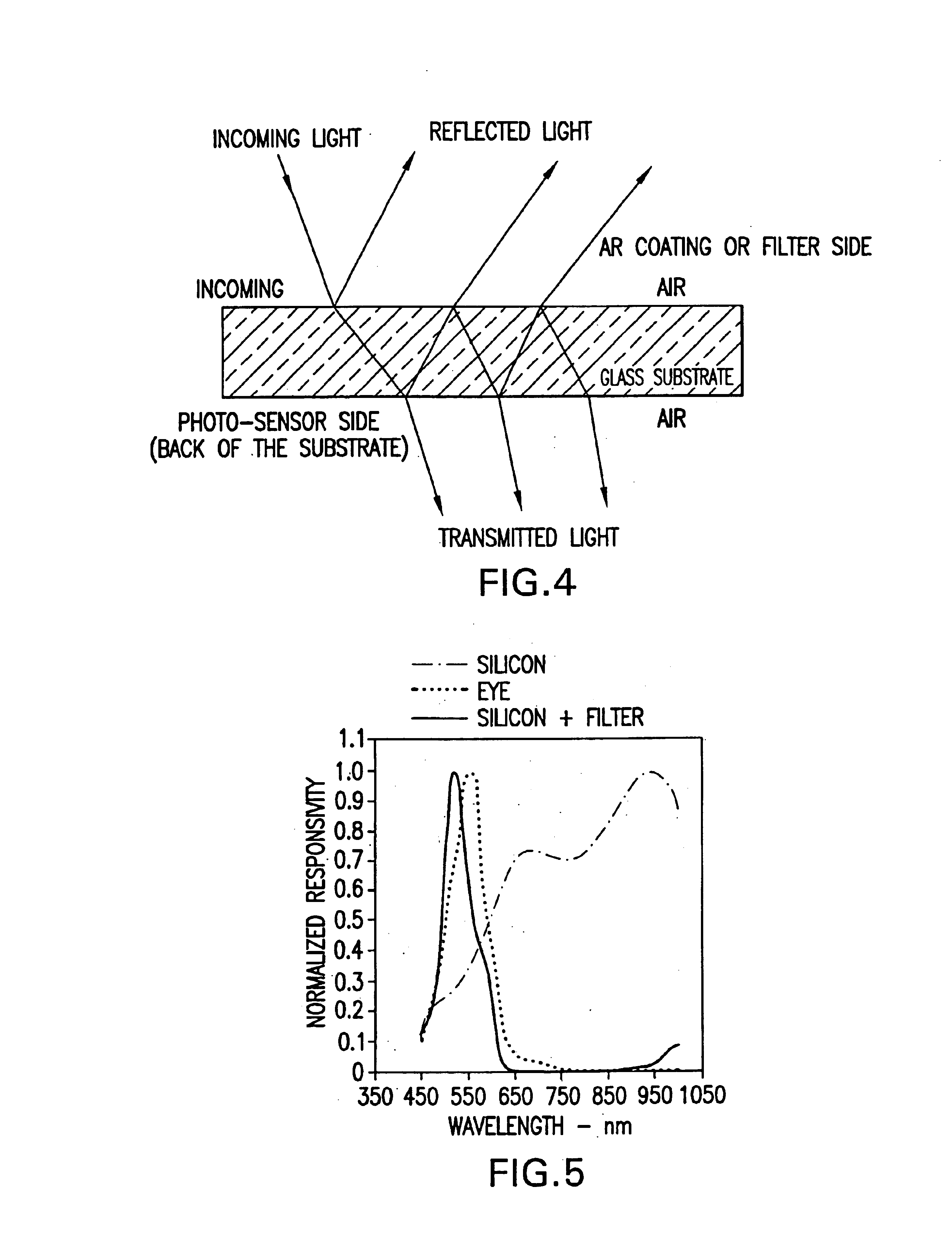Electronic package of photo-sensing semiconductor devices, and the fabrication and assembly thereof
a technology of photo-sensing semiconductor devices and electronic packages, which is applied in the direction of semiconductor devices, semiconductor/solid-state device details, radiation control devices, etc., can solve the problems of limited improvements in positioning accuracy of photo-sensing devices, package configurations that do not allow very precise placement of photo-sensing devices, and small packaging sizes for hand-held applications. , to achieve the effect of reducing packaging costs
- Summary
- Abstract
- Description
- Claims
- Application Information
AI Technical Summary
Benefits of technology
Problems solved by technology
Method used
Image
Examples
Embodiment Construction
A photo-sensing semiconductor wafer has a plurality of dice, and each die has integrated circuitry formed on a front surface of the wafer, much as in other semiconductor wafers. Each die has a plurality of bonding pads. The wafer has a patterned passivation layer over the front surface for protecting the integrated circuitry underneath. The passivation layer has openings on said bonding pads. Each such photo-sensing die has at least one photo-sensing area on a front surface.
Wafer bumping is a well-known technique that has been widely used since its initial teaching, as reflected in U.S. Pat. No. 3,292,240 entitled “Method of Fabricating Microminiature Functional Components,” assigned to IBM. A typical wafer bumping process includes at least one patterned metal layer for making solder bump pads connected to bonding pads on the wafer. Metallurgy used for solder bump pads is commonly referred to as under bump metallurgy (UBM) and typically utilizes a multilayered structure to provide m...
PUM
 Login to View More
Login to View More Abstract
Description
Claims
Application Information
 Login to View More
Login to View More - R&D
- Intellectual Property
- Life Sciences
- Materials
- Tech Scout
- Unparalleled Data Quality
- Higher Quality Content
- 60% Fewer Hallucinations
Browse by: Latest US Patents, China's latest patents, Technical Efficacy Thesaurus, Application Domain, Technology Topic, Popular Technical Reports.
© 2025 PatSnap. All rights reserved.Legal|Privacy policy|Modern Slavery Act Transparency Statement|Sitemap|About US| Contact US: help@patsnap.com



